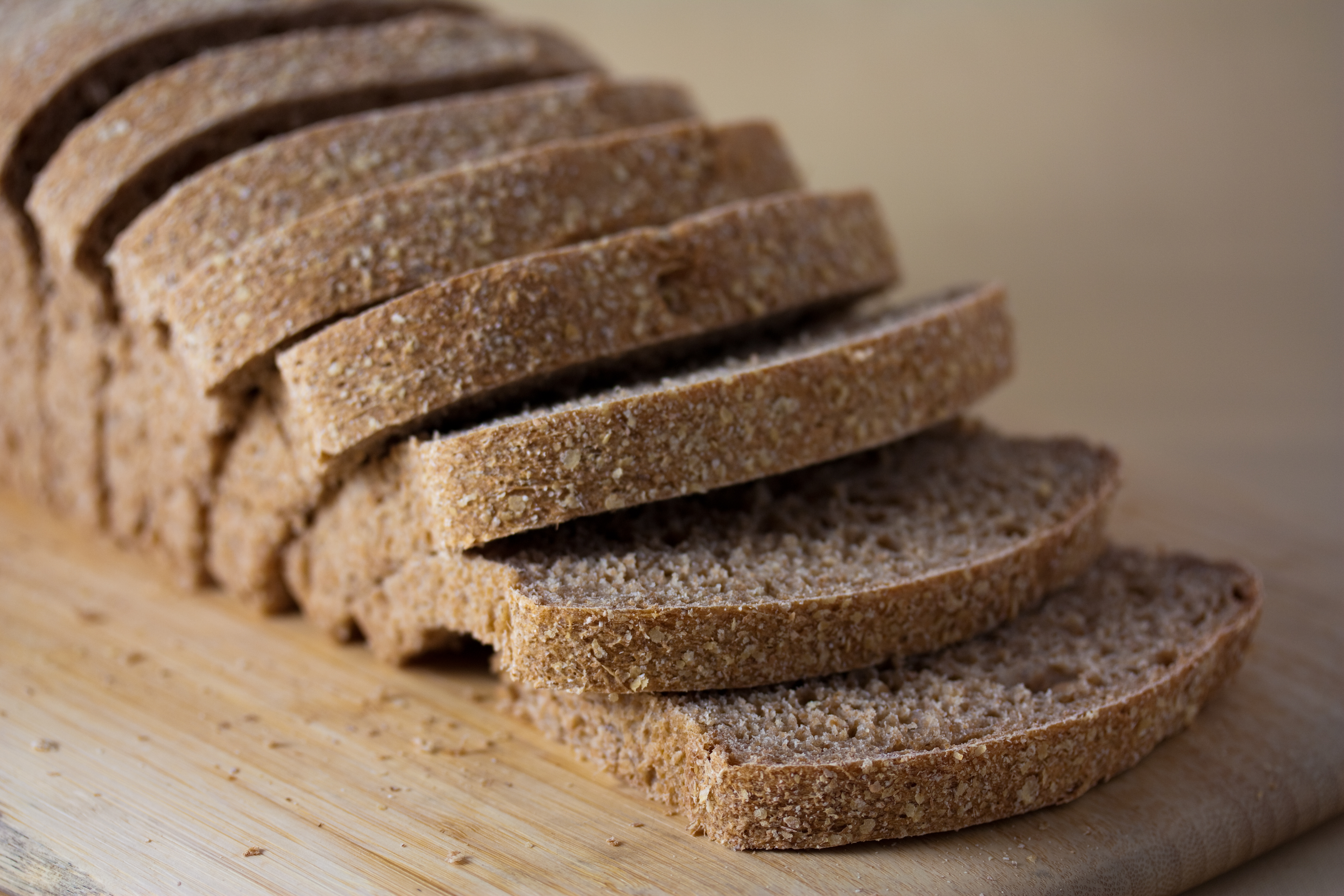
The United States Department of Agriculture (USDA recommends that at least one half of all grain products consumed be from whole grain sources. Many people mistakenly believe that if the label states the presence of wheat that indicates whole grain. For the purposes of this article we will focus on bread.
While all wheat-based breads contain flour made from wheat grain not all breads are whole grain. Whole wheat bread uses all of the parts of the grain kernel, including the bran, germ and endosperm, components that are a good source of fiber and nutrients in a daily diet. White bread is made from wheat however the bran and germ are lost during the milling process. Milling gives white bread a finer texture and increases the product’s shelf life but the refining process rids the bread of essential vitamins and dietary fiber as well. Some of these nutrients are added back in to prevent severe nutritional deficiency.
New research suggests that the numerous benefits of whole wheat bread extend to a lower risk of colorectal cancer. In a 2011 study conducted by Dutch and British researchers for the World Cancer Research Fund, foods with a high fiber content was linked to reduced instances of colorectal cancer. This extensive study analyzed the results of 25 previous studies and showed that adding three servings of whole grains in a daily diet reduced the risk of colorectal cancer by around 20 percent.
Because high-fiber foods slow the rate at which glucose enters the bloodstream, whole grain foods are recommended for those with diabetes and for those at risk for the disease as well. The American Diabetes Association recommends substituting processed grain products for whole grain foods in the diet as an effective way to lower glycemic index, an index that calculates how fast a food increase blood glucose levels.
Additionally, whole grain wheat bread may be more beneficial in weight loss than white bread. Foods such as highly processed white bread have a higher glycemic index that quickly raises blood glucose levels; this can cause people to feel hungry again faster than after eating whole grain bread.
In a study published in GUT, an international journal of gastroenterology, researchers examined how fast the stomach empties its contents after consuming whole grain bread or white bread. The study found that the stomach emptied significantly faster after white bread consumption. These findings may be useful in the treatment and prevention of duodenal ulcers as well.
While nutrients are often added to white bread, fiber is not. High-fiber diets have long been associated with better heart health. The USDA has a long list of health claims relating to high-fiber foods and a reduced risk of coronary disease that food manufacturers are allowed to display on labels of qualifying products.
The Centers for Disease Control and Prevention (CDC) recommends 14 grams of dietary fiber for every 1,000 calories of food consumed each day. The CDC also recommends that half of grain foods consumed are whole grain products. Purchasing whole grain wheat bread from stores, however, can be challenging. Because ingredients such as molasses can make refined grain breads look brown, color alone is never an indicator of a whole grain product. The USDA warns that breads labeled as multi-grain or 100-percent wheat are usually not whole grain bread either.
Purchasing whole wheat flour and making the bread from scratch assures that the food is whole grain. It’s also the best way to controls the amount of added sugars in the bread too. Processed bread typically contains artificial or natural sweeteners which may well including high-fructose corn syrup. Purchased wheat bread tends to be high in sodium as well. When it comes to taste, purchased wheat bread simply can’t compared to homemade bread fresh out of the oven.
Making bread at home no longer requires long preparation times. Modern yeast products have made multiple rising periods unnecessary. The best stand mixers make short work of mixing and kneading the bread dough. Mixers are ideal for those who prefer to bake their homemade bread in the oven. Bread machines are another alternative, allowing the bread to rise and bake in one device.
Whole grain wheat bread has been proven to reduce the risk of type 2 diabetes, obesity and cardiovascular disease. With numerous research studies supporting the benefits of whole wheat bread and other high-fiber foods, making whole grain bread at home is easy, nutritious, and delicious.
Matthew Laphet writes a variety of articles about health and nutrition. When not writing he can be found online at Hobart Mixer promoting their high quality commercial mixers.
photo: veganbaking.net

